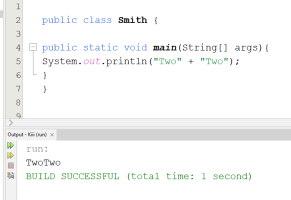Now is the crucial part. We have a beautiful \(\displaystyle \textcolor{black}{\bold{Theorem}}\) which says:
If \(\displaystyle \lambda\) has multiplicity \(\displaystyle 2 \longrightarrow \lambda_1 = \lambda_2\)
Then,
The first solution is:
\(\displaystyle \bold{X}_1 = c_1\bold{K}e^{\lambda_1t}\)
The second solution is:
\(\displaystyle \bold{X}_2 = c_2\left(\bold{K}te^{\lambda_1t} + \bold{P}e^{\lambda_1t}\right)\)
If \(\displaystyle \lambda\) has multiplicity \(\displaystyle 3 \longrightarrow \lambda_1 = \lambda_2 = \lambda_3\)
Then,
The third solution is:
\(\displaystyle \bold{X}_3 = c_3\left(\bold{K}\frac{t^2}{2}e^{\lambda_1t} + \bold{P}te^{\lambda_1t} + \bold{Q}e^{\lambda_1t}\right)\)
If you look carefully at the pattern, you will be a able to solve a system even if \(\displaystyle \lambda\) has multiplicity \(\displaystyle \textcolor{red}{\bold{1}} \ \bold{million}\).
\(\displaystyle \bold{X}' = \begin{bmatrix}2 & 1 & 6 \\0 & 2 & 5 \\0 & 0 & 2\end{bmatrix}\bold{X}\)
Then, the general solution to this system is:
\(\displaystyle \bold{X} = \bold{X}_1 + \bold{X}_2 + \bold{X}_3\)
Or
\(\displaystyle \bold{X} = c_1\bold{K}e^{\lambda_1t} + c_2\left(\bold{K}te^{\lambda_1t} + \bold{P}e^{\lambda_1t}\right) + c_3\left(\bold{K}\frac{t^2}{2}e^{\lambda_1t} + \bold{P}te^{\lambda_1t} + \bold{Q}e^{\lambda_1t}\right)\)
Or
[imath]\mathbf{X} = \textcolor{red}{c_1}\begin{bmatrix}1\\[5pt]0\\[5pt]0\end{bmatrix}e^{2t} + \textcolor{blue}{c_2} \left( \begin{bmatrix}1\\[5pt]0\\[5pt]0\end{bmatrix} t e^{2t} + \begin{bmatrix}0\\[5pt]1\\[5pt]0\end{bmatrix} e^{2t} \right) + \textcolor{green}{c_3} \left( \begin{bmatrix}1\\[5pt]0\\[5pt]0\end{bmatrix} \frac{t^2}{2} e^{2t} + \begin{bmatrix}0\\[5pt]1\\[5pt]0\end{bmatrix} t e^{2t} + \begin{bmatrix} \phantom{-}0 \\[5pt] -\frac{6}{5} \\[5pt] \phantom{-}\frac{1}{5} \end{bmatrix} e^{2t} \right)[/imath]

